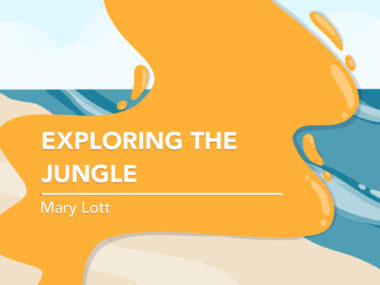4 ways I tended to my health while seeking a diagnosis
How I tried to maintain good health while getting to the bottom of my symptoms
Written by |

I carefully pulled myself out of the sunken bathtub and waited a moment before swinging around to stand up. I gripped the sink next to me, pulled up, and caught my breath. “Whoa!” I thought to myself. “That tired me out. Good thing I don’t have to be at work for another two hours.”
In the spring of 2016, I knew something within my body was not quite right. I would get up, get dressed, and then have to rest for a while before going to school to teach my sixth grade class. I needed to find some answers. Sadly, in all my searching down bunny trails, I didn’t learn anything specific. It would be another two years before I was diagnosed with cold agglutinin disease (CAD) and accompanying chronic lymphocytic lymphoma.
During that period of searching for answers, many concerned and sympathetic friends shared recommendations for maintaining a strong immune system and a healthy body. Most of their suggestions were common sense — things I should have been doing regardless of any health issues.
After carefully weighing all the advice and consulting with my medical team, I doubled down on the following practices.
Easy habits to establish
One suggestion was to “eat the rainbow.” This meant adding a variety of color to my diet, especially through vegetables such as broccoli, mushrooms, kale, and assorted greens. These are full of antioxidants, which are reputed to be cancer fighters. Leafy vegetables are also a key component of an anti-inflammatory diet, which I now know can be beneficial for CAD patients.
Another friend suggested I talk with my doctor about any vitamins or supplements I should be taking. I’ve been chronically anemic since the early 2000s, so we wondered if I should take iron. But after my CAD diagnosis, my doctor explained that I shouldn’t take iron because CAD is not caused by an iron deficiency. I do take some other vitamins, as recommended by my medical team. It’s always important to consult your doctor before taking any vitamins or supplements.
Another excellent suggestion I received was to maintain a regular sleep schedule. According to CAD News, “A good night’s sleep can help the body recover or boost energy levels, and help reduce fatigue.” And because changes to sleep patterns can often be an early response to infection, it makes sense that deep, regular sleep helps boost the immune system.
Despite my efforts, I’ve often struggled to regulate my sleep pattern. Periodically traveling between hemispheres doesn’t help, and neither does having two preteens in the household. Homework, school projects, and evening activities often push back my bedtime. On this point, I must accept that I’m not currently getting an ideal amount of sleep.
My friends’ final suggestion was to manage my stress. Many causal factors are unavoidable: the loss of a family member or friend, moving, economic challenges, etc. Nevertheless, stress can make us vulnerable to infections and cause headaches, insomnia, and muscle cramps. Learning to manage stress has helped me manage my symptoms, even before I knew I had CAD.
When all is said and done
During my search for answers, I learned an important lesson about my limitations. Although I’m more invested in my health than anyone, including my husband and children, I don’t know everything. I cannot make fully educated decisions about my health by relying only on my own knowledge. That is why I have a medical team and am now in a group of fellow “CADdies,” as those of us with CAD call ourselves. Following my doctor’s recommendations just makes sense. Discussing and comparing experiences with other CADdies helps me maintain a balanced viewpoint.
When all is said and done, I continue to implement the practices that help me better manage my health. I watch my diet, limit my sugar intake, and eat foods that promote good blood health. I meditate on Bible passages and pray. I adhere to my CAD treatment plan.
After discussing these habits with my doctor, he said, “You will die with CAD, not from it.” That is good to know.
Note: Cold Agglutinin Disease News is strictly a news and information website about the disease. It does not provide medical advice, diagnosis, or treatment. This content is not intended to be a substitute for professional medical advice, diagnosis, or treatment. Always seek the advice of your physician or other qualified health provider with any questions you may have regarding a medical condition. Never disregard professional medical advice or delay in seeking it because of something you have read on this website. The opinions expressed in this column are not those of Cold Agglutinin Disease News or its parent company, Bionews, and are intended to spark discussion about issues pertaining to cold agglutinin disease.






Leave a comment
Fill in the required fields to post. Your email address will not be published.